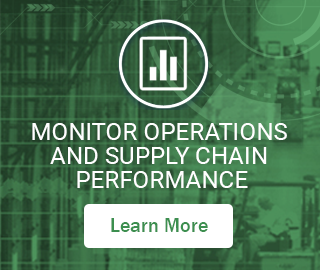Belmont, Mass., June 13, 2013 – Smart Software, Inc., provider of industry-leading demand forecasting, planning, and inventory optimization solutions, today announced that New Jersey Transit (NJT) has purchased Smart’s flagship product, SmartForecasts®, for its rail and bus operations as part of a company-wide service improvement and inventory reduction program. NJT is the nation’s third largest provider of bus, rail and light rail transit, and links major points in New Jersey, New York and Philadelphia.
NJT will use SmartForecasts to forecast parts consumption and inventory stocking requirements for its 40,000 active spare and service parts, valued at more than $100 million. Much of NJT’s inventory experiences erratic, intermittent demand which is especially difficult to forecast and can lead to significant over- and under-stocking of critical parts. Early results with SmartForecasts indicate the potential for substantial savings and service level improvements, once full-scale implementation is complete.
Smart Software will implement the NJT project in two stages. The first stage will focus on using SmartForecasts to identify immediate short term benefits for key groups of parts, as well as measure the likely long term benefits for NJT. In the second stage, SmartForecasts will be integrated into the day-to-day planning environment at New Jersey Transit.
SmartForecasts offers unique, patented statistical solutions to forecast intermittent demand, a particularly challenging aspect of service parts management, as well as a complete suite of automated forecasting and planning methodologies. By automatically identifying the right method for each part, SmartForecasts can significantly reduce the amount of inventory required to meet a defined level of service.
“We have had several very strong successes helping transit systems improve their parts inventory planning and provide better service to their customers with better parts availability,” said Nelson Hartunian, CEO of Smart Software. “Organizations like New Jersey Transit are looking for ways to help them reduce their costs without negatively impacting customer service. With ridership trending up, this is ever more important. We look forward to helping NJT achieve its goals.”
About New Jersey Transit
NJ TRANSIT is New Jersey’s public transportation corporation. Its mission is to provide safe, reliable, convenient and cost-effective transit service with a skilled team of employees, dedicated to our customers’ needs and committed to excellence. Covering a service area of 5,325 square miles, NJ Transit is the nation’s third largest provider of bus, rail and light rail transit, linking major points in New Jersey, New York and Philadelphia. The agency operates a fleet of 2,027 buses, 711 trains and 45 light rail vehicles. On 236 bus routes and 11 rail lines statewide, NJ Transit provides nearly 223 million passenger trips each year. In addition, the agency provides support and equipment to privately-owned contract bus carriers. For additional information about NJ Transit, click here.
About Smart Software, Inc.
Founded in 1981, Smart Software, Inc. is a leading provider of enterprise-wide demand forecasting, planning and inventory optimization solutions. Smart Software’s flagship product, SmartForecasts, has thousands of users worldwide, including customers at mid-market enterprises and Fortune 500 companies, such as Abbott Laboratories, Metro-North Railroad, Siemens, Disney, Nestle, Nikon, GE and The Coca-Cola Company. Smart Software is headquartered in Belmont, Massachusetts and can be found online at www.smartsoftware.wpengine.com .
SmartForecasts is a registered trademark of Smart Software, Inc. All other trademarks are the property of their respective owners.
For more information, please contact Smart Software, Inc., Four Hill Road, Belmont, MA 02478.
Phone: 1-800-SMART-99 (800-762-7899); FAX: 1-617-489-2748; E-mail: info@smartsoftware.wpengine.com




















